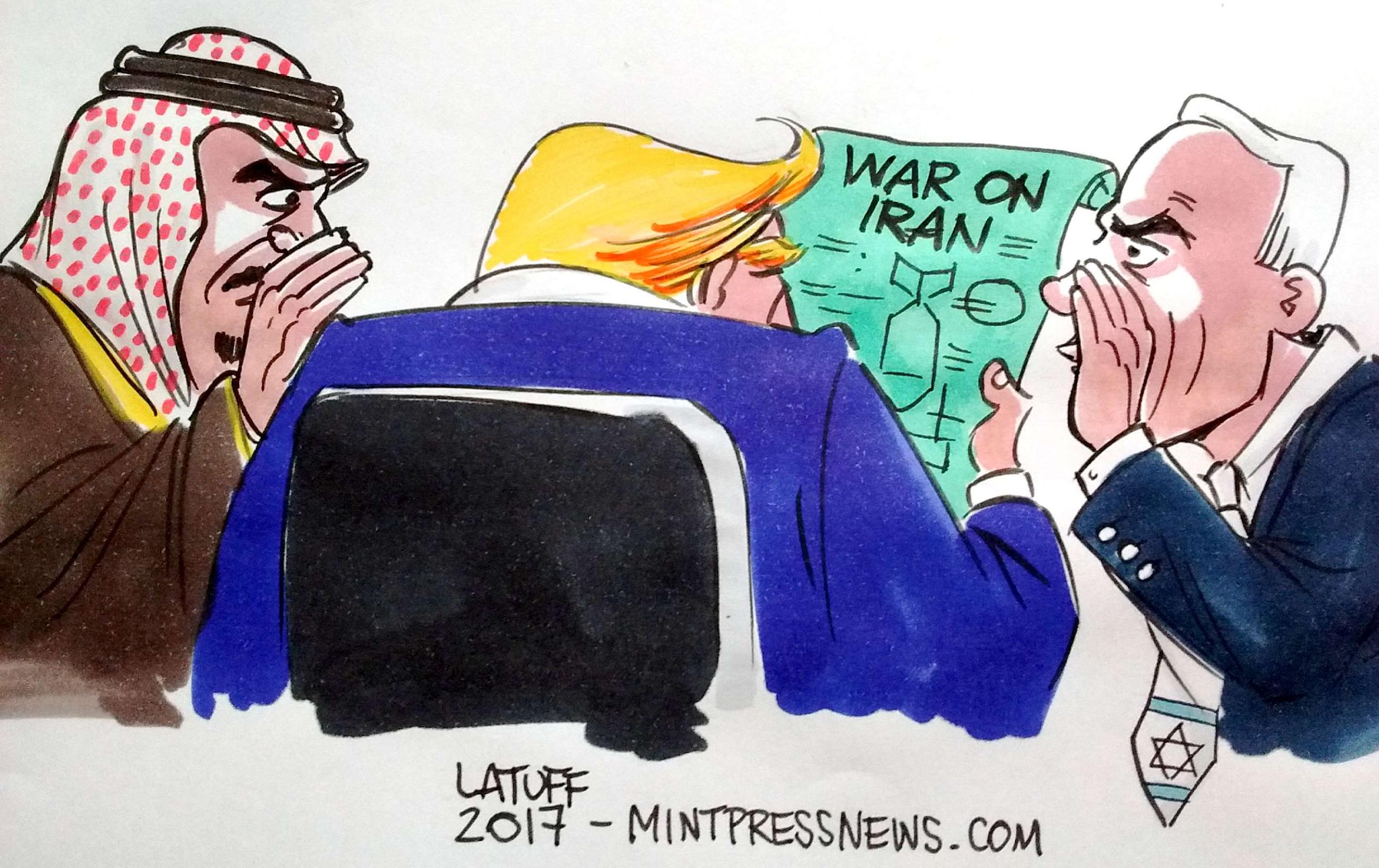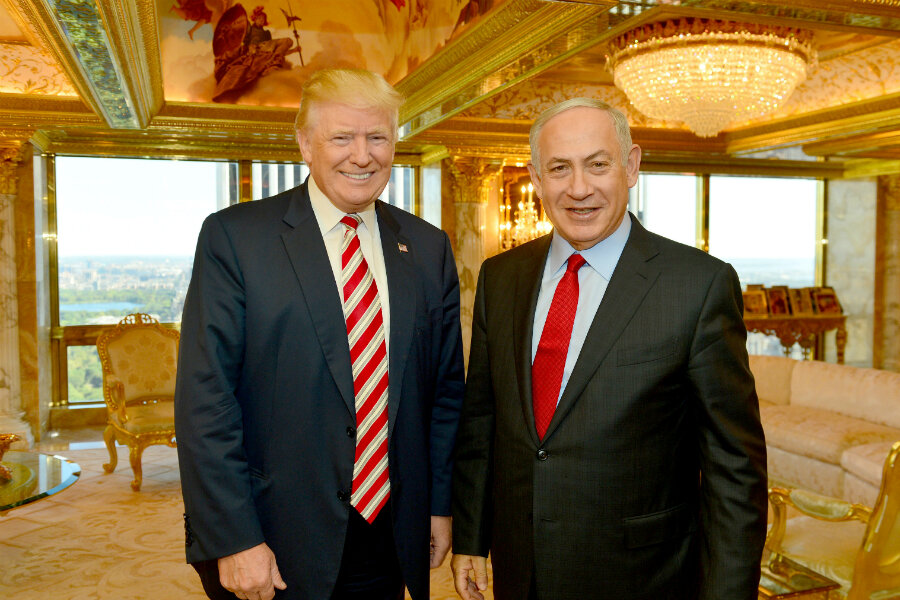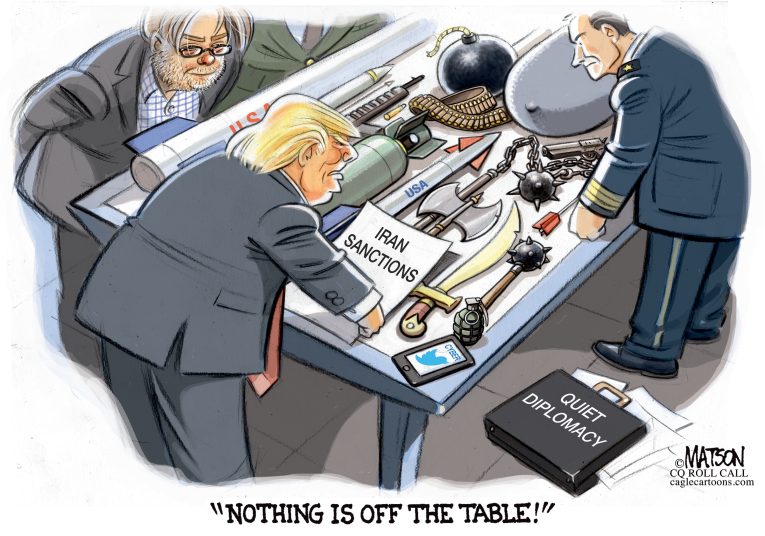The epidemic of bomb threats against Jewish organizations, explained
In the first weeks of 2017, 69 bomb threats were called in to Jewish community centers across the country, sending preschool kids scurrying to safety, again and again, beyond the walls of their daytime homes. Over this past weekend, a historic cemetery outside St. Louis, Missouri, was vandalized, with nearly 200 tombstones overturned. On Wednesday morning, the New York offices of the Anti-Defamation League (ADL) received a bomb threat, while hours later a Jewish day school in North Carolina was evacuated after receiving a similar threat.
And for weeks, that surge of anti-Semitic incidents was ignored by President Donald Trump, who repeatedly brushed aside questions about the proposed violence (and had previously released a statement on Holocaust Remembrance Day that didn’t mention Jews). Trump made his first targeted comments about the threats on Tuesday, calling them “horrible and painful,” but his words weren’t enough to counter the growing sense in the Jewish community that their vulnerability is, at best, unimportant to the president. Steven Goldstein, executive director of the Anne Frank Center, tweeted angrily that the belated remarks were a mere “Band-aid on the cancer of anti-Semitism that has infected [Trump’s] own administration.”
(It was his Vice President, Mike Pence who won accolades by a surprise visit to the vandalized cemetery on Wednesday, where he spoke and rolled up his sleeves to join the clean-up efforts.)
But it isn’t just concern about Trump that is filling the Facebook feeds of America’s Jewish community. It is the genuine fear that the country has entered into a new era where anti-Semitism has left the shadows and taken a louder, bolder place on the center stage of American society.
That fear shouldn’t come as much of a surprise. As my colleague Yochi Dreazen wrote back in October, candidate Trump “revived some of the ugliest of anti-Semitic stereotypes” in speeches and advertisements that recalled canards over Jews controlling the levers of power and money in American society.
It’s important to note two caveats. First, this year’s anti-Semitic threats have thankfully not resulted in any actual violence; the last deadly attack on a Jewish target took place in 2014 when a white supremacist gunman killed three people at a pair of Jewish institutions in Kansas. Second, it’s not clear that overall anti-Semitism is actually on the rise. The ADL found last fall that 14 percent of Americans, or 34 million people, harbored anti-Semitic attitudes, a number largely unchanged from prior years.
Still, one threat against a JCC would be unsettling, but 69 of them, in just a few weeks, is an epidemic that is both unprecedented and terribly unnerving.
The spike in anti-Semitic vandalism and threats comes amid a global trend of racist, xenophobic, and Islamophobic rhetoric, and amid the rise of populist political leaders who espouse such thinking. From Brexit to the election of Donald Trump to the polls showing Front National leader Marine Le Pen leading the pack in the upcoming French election, there is a new permissiveness displayed toward populist speech that highlights nationalism over globalization while shunning immigration and outsiders, especially Muslims and other non-Christians.
Racism for some, points out Ryan Lenz of the Southern Poverty Law Center, no longer carries shame.
“It feels like hate has gone mainstream, and so it is a time of real fear,” says Rabbi Joshua Stanton, a congregational rabbi in the New York metro area. Stanton notes it feels like anti-Semitism is somehow suddenly “more socially acceptable than it has been in a generation or two. For a growing number of sub-groups, it is seen as acceptable and even a marker of belonging.”
Don’t blame Trump for anti-Semitism. Don’t give him a pass, either.
In the early aughts, groups like the ADL saw a notable uptick in anti-Semitism on university campuses across the country. Most of that was connected to the politics of the Middle East, like Israel’s 2014 war in the Gaza Strip.
The major difference now is that the current spike in anti-Semitic violence appears to come from our own political environment, not from any events overseas.
It’s impossible, and unfair, to pin all of it on Donald Trump, but he has contributed to the problem. In December 2015, he bragged to the Republican Jewish Coalition that he didn’t “want their money” and so they weren’t going to support him anyway. It was widely believed his implication was Jews normally think they can buy a candidate with their vast wealth.
In July 2016, Trump tweeted out an image of Hillary Clinton alongside a six-pointed star emblazoned with the words “most corrupt candidate ever,” atop a pile of money. The six-pointed star is known as the Star of David and has for millennia been a sign of the Jewish people. The tweet was widely seen as a blending of anti-Jewish sentiment, equating Jews with money and corruption. The campaign denied the charge, though the tweet was deleted and replaced with a circle where the star had been. PolitiFact later showed the image had come from a message board used by members of the racist, misogynistic, and anti-Semitic alt-right.
At the same time, anti-Semitic online trolling of journalists reached levels never before seen. White supremacists, angered by negative coverage of Trump’s campaign, began photoshopping images of journalists into concentration camp uniforms and into cartoons that smacked of 1930s-era anti-Semitic imagery. While the messages didn’t come from the campaign, many of those targeting journalists self-identified as supporters of the Republican candidate.
Then in the home stretch of the campaign, the final advertisement of the Trump camp used anti-Semitic dog whistles about money, power, and “global special interests,” and flashed pictures of financier George Soros, Federal Reserve Chair Janet Yellen, and Goldman Sachs Chair and CEO Lloyd Blankfein — all of whom are Jewish.
That populist environment seems to have had an impact on a rise in reported hate crimes, generally, in the immediate aftermath of the campaign.
In the first month after the election, the Southern Poverty Law Center collected 1,094 reports of what it calls “bias-related incidents” against immigrants, Muslims, Jews, women, and LGBTQ individuals. It’s an eye-opening number, but one that may be enormously underreported because, as with all hate crime statistics, the incidents were largely self-reported by groups that may not feel comfortable talking to law enforcement.
What gives experts pause isn’t just the number of such incidents. It’s how easily anti-Semitic, anti-immigrant, anti-Muslim, and other forms of hatred can be spread over Facebook, Twitter, and other social media platforms.
Social media is giving anti-Semites louder microphones
The exploitation of modern technological platforms to spread anti-Semitism is “unprecedented,” according to the ADL’s Oren Segal. Also unprecedented, he said, is the sense among “white supremacists, in particular, that they have a champion in the highest office.”
On the ADL’s blog, a rundown of neo-Nazi responses to last Thursday’s White House press conference supports that thought. At that press event, Jake Turx, a visibly religious Jewish reporter from the ultra-Orthodox Jewish magazine Ami, asked Trump about anti-Semitism. The president brusquely cut him off. “Not a simple question. Not a fair question,” Trump said as Turx tried to ask about the increase in bomb threats. He told Turx to sit down. “I understand the rest of your question. ... So here's the story, folks. Number one: I am the least anti-Semitic person that you've ever seen in your entire life.”
“Sit down Jew boy! The goyim have had enough,” read one tweet celebrating the moment.
Jonathan Greenblatt, the CEO of the ADL, said it’s become socially unacceptable to publicly express anti-Semitism — but it’s a vastly different story online.
“Fifty years ago [anti-Semites] had to share notes and fliers,” he told me. “Today they are burning up Twitter.”
Trump is in denial about the dangers of white supremacists and neo-Nazis
In early February, Reuters reported that the Trump White House was considering changing the name of a government program currently known as Countering Violent Extremism, or CVE, to “Countering Islamic Extremism" or "Countering Radical Islamic Extremism."
That would mean abandoning, at least formally, any focus on white supremacist violence or right-wing extremism. And that would be a dangerous mistake given that between 2001 and 2015, more Americans were killed by homegrown right-wing extremists than by Islamist terrorists.
As my colleague Jennifer Williams has written, “adopting extremist views and committing horrendous acts of violence in the name of some ‘righteous’ cause, be it religion or politics or just plain old hatred, isn't something that only Muslims do.”
Turning the focus away from white supremacist or racist violence becomes, in and of itself, a means of emboldening those very groups. They are the groups that have been most likely to go after Jewish organizations and communities. In Whitefish, Montana, for example, an entire community was targeted and its rabbi harassed, and a neo-Nazi march was planned (though later scuttled).
“We can't forget that these groups are listening, and watching,” says Segal. “White supremacists should never feel they are in a safe space.”
He notes that a week ago, a self-styled white supremacist was arrested in South Carolina for allegedly threatening a “Dylann Roof–style” attack on Jews, a reference to the 2015 murder of nine parishioners at a historically black church in Charleston.
Not monitoring white supremacists, Segal says, also creates a feeling among Jewish Americans that their concerns are not being taken seriously.
Moments of solidarity amid the hate and fear
There has been heartening bridge building across persecuted groups, from hands extended between individual rabbis and imams to larger, more public acts of coalition building, including a call by the Council on American Islamic Relations (CAIR) Monday offering a $5,000 reward for information exposing the perpetrators of the JCC threats.
Late on Tuesday, Muslim activists Linda Sarsour and Tarek El-Messidi launched a crowdfunding site to repair the desecrated graves in Missouri.
“Through this campaign, we hope to send a united message from the Jewish and Muslim communities that there is no place for this type of hate, desecration, and violence in America,” the funding page said. “We pray that this restores a sense of security and peace to the Jewish-American community who has undoubtedly been shaken by this event.”
The stated fundraising goal was $20,000. It was met within three hours of the site going online.
As of Wednesday afternoon, the site had raised nearly $85,000.
Later that same day, another Jewish institution — this time a day school in Durham, North Carolina — was evacuated after a bomb threat.
As Wednesday came to a close, 150 Congress members, joined by the JCC Association of North America, delivered a letter to Homeland Security Secretary John Kelly, Attorney General Jeff Sessions, and FBI Director James Comey. It read, in part:
We urge the Department of Homeland Security and the Department of Justice to swiftly assess the situation and to advise Congress on what specific steps are being taken, or will be taken, to deter such threats from being made, to identify and prosecute the perpetrators for violations of federal criminal laws, and to enable JCCs to enhance security measures such as physical barriers and guards, in the event that an individual seeks to act upon these threats.










